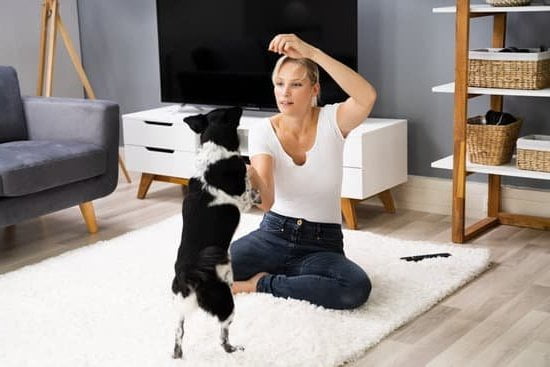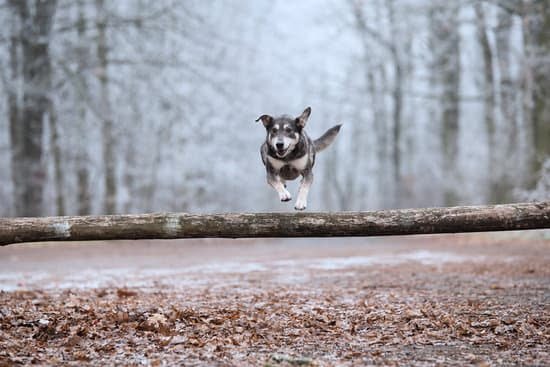How do you adopt dogs who failed training? When considering adopting a dog, it’s important to understand that not all dogs have had successful training experiences. This can be due to a variety of reasons such as previous neglect, abuse, or simply mismatched training methods. In this article, we will explore the concept of failed training in dogs and provide insight into how to successfully adopt and care for a dog who has faced these challenges.
Failed training can have a significant impact on a dog’s behavior and emotional well-being. Dogs who have experienced failed training may exhibit behavioral issues such as aggression, fearfulness, or destructive tendencies. Additionally, these dogs may also struggle with trust and confidence, making it crucial for potential adopters to understand the unique needs of these animals.
Identifying dogs who have experienced failed training requires careful observation and an understanding of the signs and red flags associated with their past experiences. Through this article, we will provide guidance on recognizing these indicators in order to make an informed decision when considering adoption. By understanding the challenges these dogs face, individuals can better prepare themselves for the responsibilities of providing a loving and supportive home environment for them.
The Impact of Failed Training on Dogs
When a dog has failed training, it can result in various behavioral and emotional challenges that need to be recognized and addressed. These challenges can range from fear and anxiety to aggression and destructive behavior. Identifying these issues is crucial in order to provide the necessary support for a dog who has had a difficult past.
Some common signs of behavioral and emotional challenges in dogs who have failed training include excessive barking, destructive chewing, cowering or hiding, growling or snapping, and difficulty with socialization. It’s important to understand that these behaviors are often a result of anxiety, fear, or lack of trust due to previous negative experiences.
To address these challenges, it’s important to provide a safe and nurturing environment for the dog. This may involve working with a professional trainer or behaviorist who specializes in rehabilitating dogs with training failures. Additionally, providing plenty of exercise, mental stimulation, and positive reinforcement can help the dog build confidence and trust.
In some cases, adopting a dog who has failed training may require extra patience and understanding. It’s important for potential adopters to educate themselves on the specific needs of these dogs and be prepared to invest time and effort into their rehabilitation.
By providing love, support, and consistent training techniques, it is possible for these dogs to overcome their past challenges and thrive in a loving home environment. Adopting a dog who has failed training can be incredibly rewarding when approached with compassion and dedication.
How to Identify Dogs Who Have Failed Training
Additionally, dogs who have failed training may display fear or anxiety in certain situations, such as around new people, other animals, or loud noises. Aggression towards humans or other animals can also be a red flag, as it may indicate a history of improper socialization or training.
Another important indicator of a dog who has failed training is excessive energy without an outlet for appropriate exercise or mental stimulation. This can lead to destructive behaviors, such as chewing furniture or incessant barking. In some cases, dogs who have failed training may exhibit submissive behaviors, such as cowering, trembling, or urinating when approached or handled. It’s crucial to be able to accurately recognize these signs in order to provide the necessary support and care for these dogs.
In addition to observable behaviors, it’s also important to consider the dog’s background and history. Dogs who have been surrendered by previous owners or who have spent a significant amount of time in shelters may have had limited access to proper training and socialization.
These experiences can contribute to their overall behavior and demeanor. Understanding these factors can help potential adopters make well-informed decisions and be better prepared for the unique needs of a dog who has experienced training challenges.
| Signs of Failed Training | Red Flags |
|---|---|
| Lack of basic obedience skills | Fear or anxiety in certain situations |
| Aggression towards humans or other animals | Excessive energy without an outlet for appropriate exercise |
| Submissive behaviors | Dog’s background and history (e.g. surrender by previous owners) |
The Process of Adopting Dogs Who Have Failed Training
When considering the adoption of a dog who has failed training, it’s important to understand that these dogs may have had a difficult past that led to their behavioral challenges. However, with the right approach and understanding, you can provide them with a loving home and the support they need to thrive. Here are some steps to consider when looking to adopt a dog who has failed training:
- Research and Preparation: Before deciding to adopt a dog who has failed training, take the time to research different breeds and understand their specific needs. Consider your lifestyle, living situation, and any existing pets or children in your home. This will help you narrow down the type of dog that will best fit into your family.
- Visit Shelters and Rescues: Local animal shelters and rescue organizations often have dogs who are in need of loving homes. When visiting these facilities, inquire about dogs who have had previous training issues. Spend some time getting to know these dogs and observe their behavior to see if there is a potential match.
- Meet-and-Greet Sessions: Once you have identified a potential match, arrange for meet-and-greet sessions with the dog. This will give you an opportunity to interact with the dog in a controlled environment, allowing you to assess their behavior and temperament.
By following these steps and taking the time to find the right match for your lifestyle and home, you can provide a second chance for a dog who has struggled with previous training. With patience, love, and proper guidance, these dogs can overcome their challenges and become wonderful companions.
Remember that adopting a dog who has failed training requires dedication and understanding as they may require specialized care in order to thrive in their new environment. By being prepared and committed to providing the necessary support, you can make a positive impact on the life of a deserving animal.
Training and Rehabilitation for Adopted Dogs
When it comes to adopting dogs who have failed training, it’s important to understand that these dogs may require specialized techniques and resources to help them overcome their past challenges. These dogs may have behavioral issues or trauma from previous experiences, so a tailored approach to training and rehabilitation is necessary.
One important aspect of training and rehabilitation for adopted dogs is seeking the expertise of professionals who have experience working with dogs that have had training difficulties. This could include certified dog trainers, animal behaviorists, or even specialized rehabilitation centers for dogs. These professionals can assess the specific needs of the dog and create a customized plan for their training and rehabilitation.
In addition to professional help, there are also resources available for pet owners who have adopted dogs with training challenges. This could include online forums or support groups where individuals can share their experiences and seek advice from others who have gone through similar situations. There are also numerous books and articles written by experts in animal behavior that can provide valuable insights into how to effectively train and rehabilitate a dog who has struggled with previous training.
| Specialized Techniques | Resources |
|---|---|
| Professional help from certified dog trainers | Online forums and support groups |
| Consultation with animal behaviorists | Books and articles written by experts in animal behavior |
By utilizing these specialized techniques and resources, pet owners can provide their adopted dogs with the support they need to overcome past training challenges and thrive in their new homes. It’s important to be patient, consistent, and understanding when working with these dogs, as building trust and rapport is key to their successful rehabilitation.
Building Trust and Rapport With a Dog Who Has Failed Training
Understanding the Dog’s Past
When adopting a dog who has failed training, it is important to understand their past. This includes learning about their previous training experiences, any potential trauma they may have experienced, and their overall behavioral and emotional challenges. By understanding the dog’s history, you can better empathize with them and tailor your approach to their specific needs.
Establishing Trust and Patience
Dogs who have failed training may be wary of humans and may display signs of mistrust. It is crucial to establish trust and patience with the dog as they adjust to their new environment. This can be achieved through consistent positive reinforcement, patience, and gentle handling. Building a strong bond with the dog will require time and dedication, but the rewards are well worth the effort.
Positive Reinforcement and Consistency
Positive reinforcement techniques are essential when establishing a strong bond with a dog who has failed training. This includes rewarding good behavior, providing a sense of security, and being consistent in your interactions with the dog. Consistency in training methods, routines, and expectations will help the dog feel more secure and build trust in you as their owner.
By understanding the dog’s past, being patient and consistent in your approach, and using positive reinforcement techniques, you can effectively build trust and rapport with a dog who has failed training. This will lay the foundation for a successful transition into their new home and set them on the path towards rehabilitation and flourishing despite previous training challenges.
Integrating a Failed Training Dog Into Your Home
Understanding the Dog’s Background and Needs
Before bringing a dog who has failed training into your home, it is crucial to understand their background and needs. Take the time to learn about their previous training experiences, any trauma they may have endured, and any specific behavioral or emotional challenges they may face. Understanding their past will help you tailor your approach to meet their unique needs.
Creating a Safe and Comfortable Environment
When integrating a failed training dog into your home, it is essential to create a safe and comfortable environment for them. Designate a quiet space where the dog can retreat to if they feel overwhelmed or anxious. Provide them with cozy bedding, toys, and access to fresh water. It’s important to gradually introduce them to different areas of your home, allowing them to adjust at their own pace.
Establishing Routine and Consistency
Dogs thrive on routine and consistency, especially those who have faced training challenges in the past. Set up a feeding schedule, potty breaks, exercise routines, and training sessions to provide structure for the dog. Consistency in your interactions with the dog will help build trust and confidence as they adjust to their new home.
By understanding the background and needs of the failed training dog, creating a safe environment, and establishing routine and consistency, you can set the stage for a successful transition into your home. Each dog is unique, so it’s essential to be patient, understanding, and flexible as they adapt to their new surroundings.
Success Stories
In conclusion, adopting a dog who has failed training can be a rewarding experience for both the owner and the pet. Despite the behavioral and emotional challenges that come with failed training, it is possible to provide a loving and supportive home for these dogs. By understanding their past and establishing a strong bond based on trust and patience, it is possible to help them flourish in their new environment.
One of the most important factors in successfully adopting a dog who has failed training is finding the right match for your lifestyle and home. This involves being honest about your own abilities and limitations, as well as carefully assessing the needs of the dog in question.
Additionally, specialized training and rehabilitation techniques may be necessary to help them overcome their previous challenges. With proper care and dedication, many dogs who have had difficulty with training can go on to lead happy, fulfilling lives in their new homes.
There are many inspiring success stories of dogs who have flourished after adoption despite previous training challenges. These tales serve as a reminder that with patience, love, and understanding, it is possible to make a positive impact on the life of a dog who has faced difficulties.
By providing a safe and nurturing environment, these dogs have been able to overcome their past struggles and thrive in their new homes. Ultimately, by opening your heart and home to a dog who has experienced failed training, you can make a meaningful difference in their life.
Frequently Asked Questions
What Do They Do With Failed Police Dogs?
Failed police dogs are often placed in loving homes as regular pets. Some may be adopted by their handlers or other officers who can provide a suitable environment for retirement.
What Happens to Dogs That Fail Military Training?
Dogs that fail military training are typically evaluated to see if they are suitable for adoption. If not, they may be transferred to civilian law enforcement agencies with less stringent requirements.
What Happens if You Adopt a Dog and It Doesn’t Work Out?
If you adopt a dog and it doesn’t work out, the responsible thing to do is to return the dog to the shelter or rescue organization where you adopted them. It’s important to find a better fit for both the dog and your family.

Welcome to the blog! I am a professional dog trainer and have been working with dogs for many years. In this blog, I will be discussing various topics related to dog training, including tips, tricks, and advice. I hope you find this information helpful and informative. Thanks for reading!





